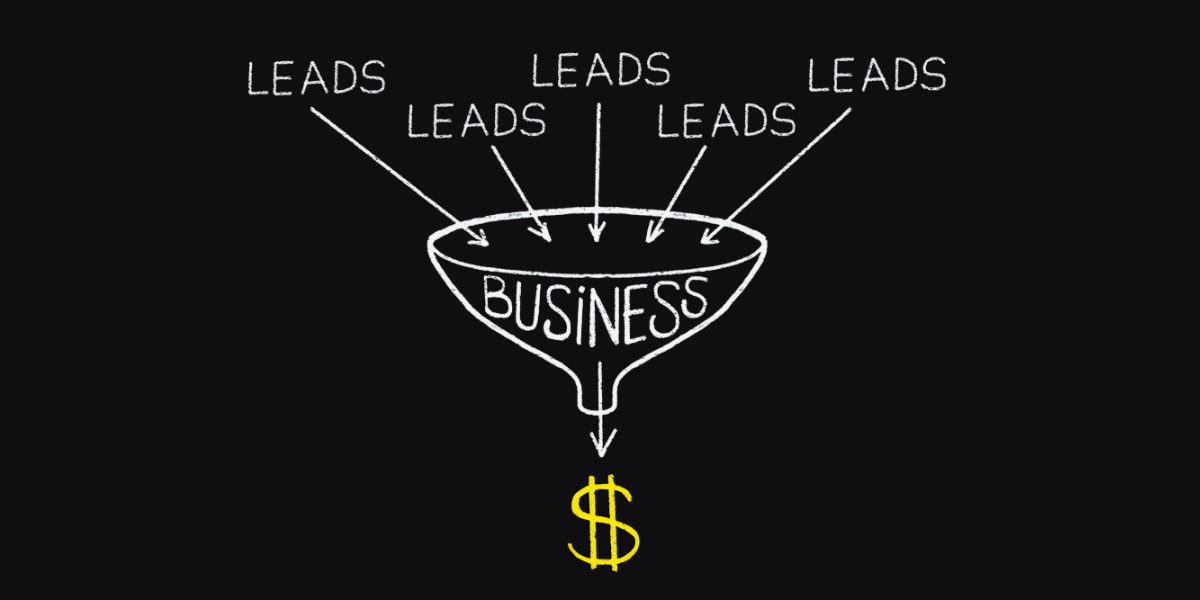Every marketer knows that having a robust online presence is essential for boosting brand awareness and driving sales. But not everyone stops to consider the powerhouse potential of their company blog in their marketing arsenal.
Treat your blog as more than just a content hub to boost conversion rates.
Picture it as a personal trainer at a gym, helping members achieve their fitness goals. The trainer carefully assesses each individual’s needs, offers tailored advice, and encourages progress through positive reinforcement. The more effective the guidance and support, the more likely members are to stick with their workout plans and recommend the trainer to others.
Similarly, your blog should provide customized, actionable advice that motivates your readers to overcome challenges and achieve their goals. Consequently, it also compels them to become loyal customers.
Here, we’ll demonstrate seven actionable tips and strategies to transform your blog into a lean, mean, sales-generating machine. We’ll discuss how your blog impacts conversions and sales by creating content that resonates with your audience, boosts their engagement, and ultimately influences their purchasing decisions.
Cater to Commercial Intent
Catering to commercial search intent means focusing on potential customers’ reasons for searching for a product/service when they’re just a step away from hitting that “buy now” button.
Here are a few key benefits of paying attention to commercial intent when crafting your blog content:
- Capturing the attention of potential customers who are ready to buy, thus increasing the likelihood of conversions
- Demonstrating a deep understanding of your audience’s needs, which helps build trust and credibility
- Enhancing your SEO efforts by targeting commercial intent keywords and making sure your brand is front-and-center when those eager shoppers are browsing
To harness the power of commercial intent, you’ll want to create content that features those critical keywords in the title and addresses the questions and concerns of customers on the verge of purchasing. This type of content can take various forms, such as product comparisons, case studies, buying guides, or in-depth reviews.
By providing helpful info that answers customers’ questions and soothes their concerns, you’re guiding them toward choosing your brand as the best option – which means more sales and conversions for you.
Example
A solid example of this practice is the in-depth product review from Shop Solar Kits below. They target several keywords with high commercial intent, such as the name of the product, “portable power station,” and “renewable energy solution.” With that, they ensure they reach out to a vast audience and have a buying incentive on hand.
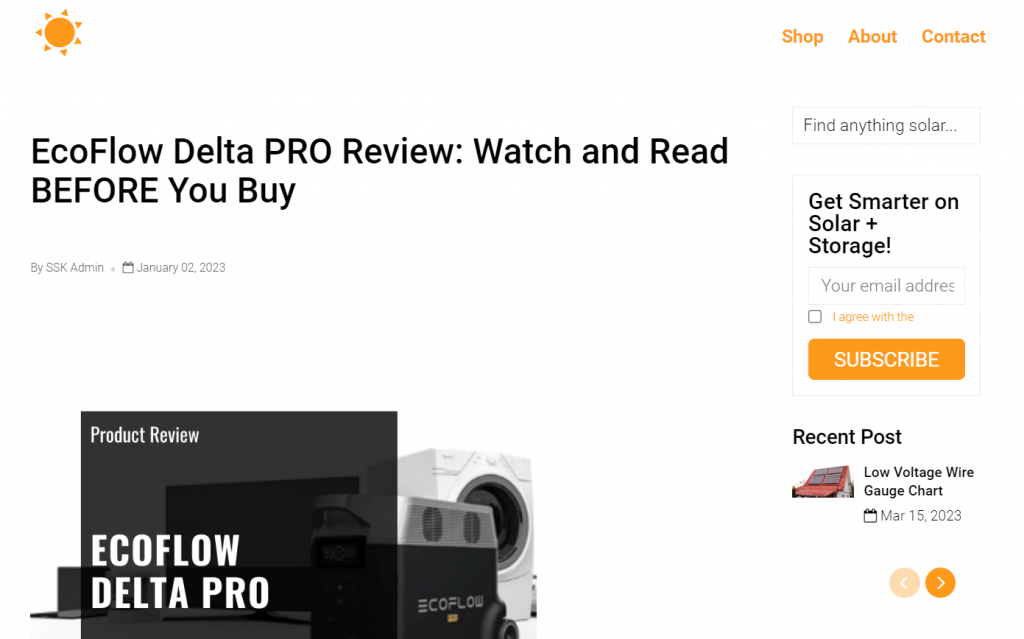 Source: Shopsolarkits.com
Source: Shopsolarkits.com
Here’s another example by Dyson, a home appliances brand, featuring a “product vs. product” comparison article. Even though they aim to boost conversions for their product in this post, they craft the information to be highly informative so readers can appreciate the sincerity and move down the sales funnel.
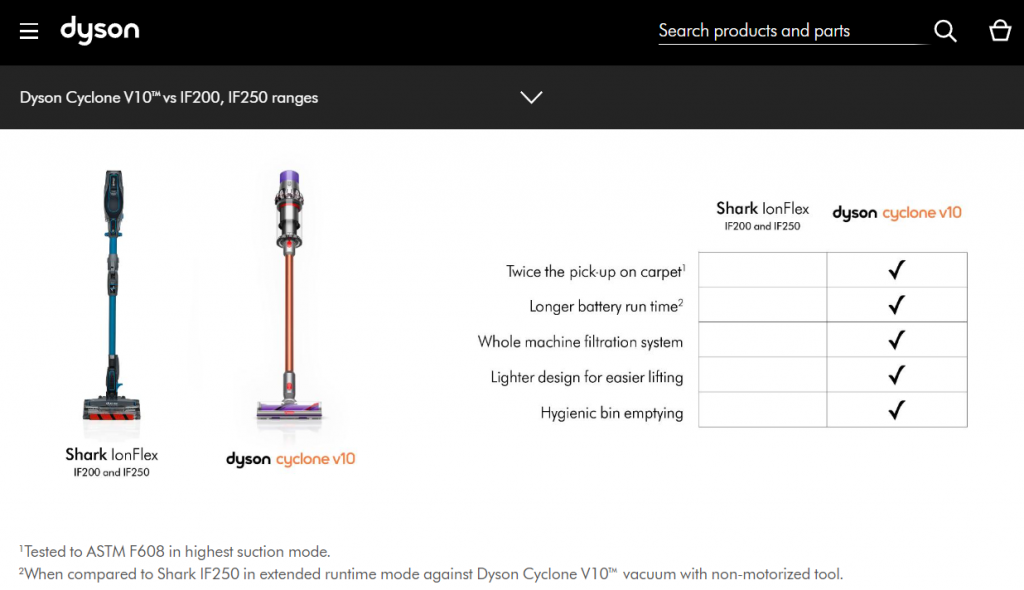 Source: Dyson.com
Source: Dyson.com
Be Very Clear About What You Do
Let’s talk about something that’s often overlooked but can make a difference in converting those blog visitors into customers – being crystal clear about what you do.
It’s crucial to remember that many potential customers will stumble upon your website for the first time via your blog (thanks to Google’s magic). So, it’s time to put your best foot forward and make your product or service shine immediately.
To ensure your blog page conveys your value proposition or product descriptions loud and clear, consider these tried-and-true strategies:
- Craft a stellar site header. A catchy, informative header can work wonders in communicating what your company is all about. Make sure it succinctly captures the essence of your product or service so that visitors instantly grasp what you have to offer.
- Add visual elements to the sidebars. Don’t let those sidebars go to waste. Use them to showcase eye-catching visuals that highlight your product’s features, benefits, or even customer testimonials. This content reinforces your brand identity and keeps your value proposition front and center.
- Create a clear call-to-action (CTA). A well-designed CTA button or link can guide your blog visitors toward exploring your product or service further. Ensure your CTA is prominent, concise, and action-oriented, encouraging visitors to take the next step in their customer journey.
- Make your core function accessible. Integrate the core functionality of your site into the blog page itself. For instance, if you run a SaaS site, include a “tour guide” section to showcase your app features. This inclusion allows visitors to experience your offerings without needing to navigate away from the blog.
Example
Look at the Career Sidekick post on what to say when they ask you why you applied for a specific job. Bookending the article’s content are two cleverly-labeled CTAs, both prompting the reader to navigate to the site’s resume builder. The header CTA even floats over the content in a very non-intrusive way, ensuring that the reader is constantly aware of what the site offers them.
The article’s footer is even more effective in this regard. The visitor sees a second prompt after reading the content and seeing the header CTA, and this one contains an even more detailed label along with some text that positions the conversion even more clearly.
 Source: Careersidekick.com
Source: Careersidekick.com
Another example is UnscrambleX. The Scrabble word finder tool has several content pieces that serve as a gateway into the site. The designers have cleverly displayed the site’s core functionality above the article header, allowing visitors to test their product immediately.
 Source: Unscramblex.com
Source: Unscramblex.com
Establish Your Brand as an Authority
By showcasing your expertise, you’re giving visitors the confidence to trust your product or service and positioning your brand as a thought leader in your niche. So, let’s dive into some tried-and-tested strategies to elevate your brand’s status and transform your blog into a beacon of knowledge.
- Share high-quality, well-researched content. Consistently publishing informative, accurate, and well-researched blog posts is the foundation of building authority. Dive deep into the topics that matter to your target audience, and be bold and offer fresh perspectives or tackle complex issues.
- Feature industry experts. Collaborate with recognized experts in your field by inviting them to contribute guest posts or participate in interviews. These collaborations bring credibility to your blog and provide valuable insights that benefit your audience.
- Position your writer as an expert in their field. If your organization employs someone with expertise in a specific field, get them to create the content. And remember to shine a big, bright spotlight on their credentials or experience.
- Create in-depth guides and resources. Offer comprehensive guides, whitepapers, or ebooks that address your audience’s pain points and challenges. You demonstrate your expertise and commitment to helping your customers succeed by providing valuable resources that solve real problems.
Example
Dreamgrow frequently publishes exceptionally detailed long-form posts on niche topics in the digital marketing niche. What establishes them as an authority is the amount of research that goes into each one of their articles.
Every single aspect of each article topic is researched and discussed. The brand knows that its competitors often produce the least words to satisfy Google’s SEO requirements or create the impression of expertise.
Look at the amount of attention their post on the web’s best affiliate marketing courses. Only five products are covered, but the content team still produced a 6,000-word article that overflows with essential information.
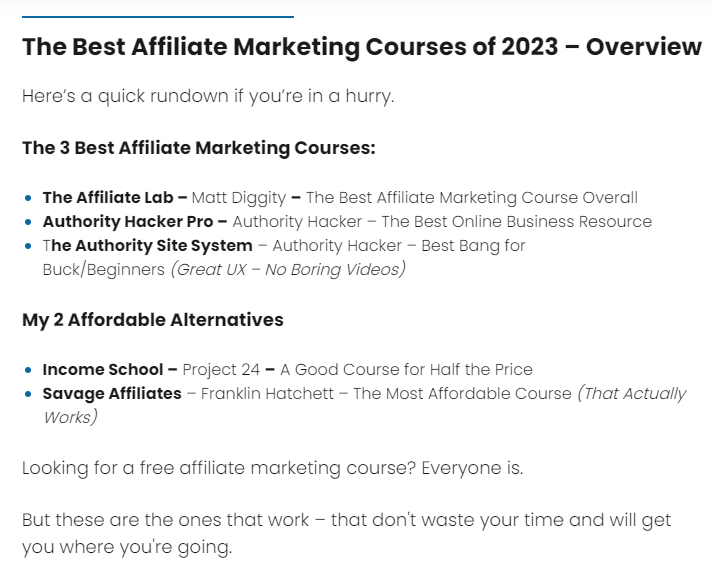 Source: Dreamgrow.com
Source: Dreamgrow.com
You may have noticed how frequently the Dreamgrow writer mentions their personal experience in the article. As mentioned before, this is another excellent way to establish the kind of authority that leads to trust and improved conversion rates.
Let’s take a look at another way of doing this.
Menlo Coaching, an MBA admissions consulting company, uses its blog to give its audience insight into the complex mechanics of the MBA admissions process.
As you can imagine, establishing credibility and trust is very important to a consulting company. And what better way to do it than to use a blog post to give one of the brand’s founders and coaches a voice and a face?
The extra trust it generates with prospective customers when they can see one of the company’s leaders talk with authority about a complicated issue plays a vital role in nudging them toward conversion.
 Source: Menlocoaching.com
Source: Menlocoaching.com
Create and Reinforce a Market for Your Product
Brands often deal with customers just dipping their toes into the buyer’s journey. You need to incentivize them to want your product or service to capture their attention.
These folks only recently discovered that a product like yours exists and are still deciding whether to commit. Your mission is to show them how relevant and valuable your offering is to their lives.
So, let’s explore some strategies to win them over by selling them what you do:
- Address their pain points. One of the most effective ways to demonstrate the relevance of your product or service is to focus on your audience’s pain points. Create content that shows how your offering can solve their problems, making their lives easier, more enjoyable, or more efficient.
- Educate and inform. Write blog posts informing readers about your industry’s challenges, trends, or opportunities. Addressing topics that matter to your target audience showcases your expertise, building awareness of the need for your solution.
- Showcase industry trends. Position your product or service within the context of emerging trends and innovations in your industry. By doing so, you highlight the relevance of your service and demonstrate your brand’s commitment to staying ahead of the curve.
- Share relatable success stories. Show real-life examples of how your product or service has positively impacted a buyer. By presenting relatable success stories, you’re helping potential buyers see themselves in those scenarios and understand the value of what you offer.
Example
Trustshoring, a company that outsources software developers, caters to people who are interested in outsourcing but have many questions. Expanding their existing knowledge, customers become more aware of the necessity of their product and move much closer to the “purchase” button.
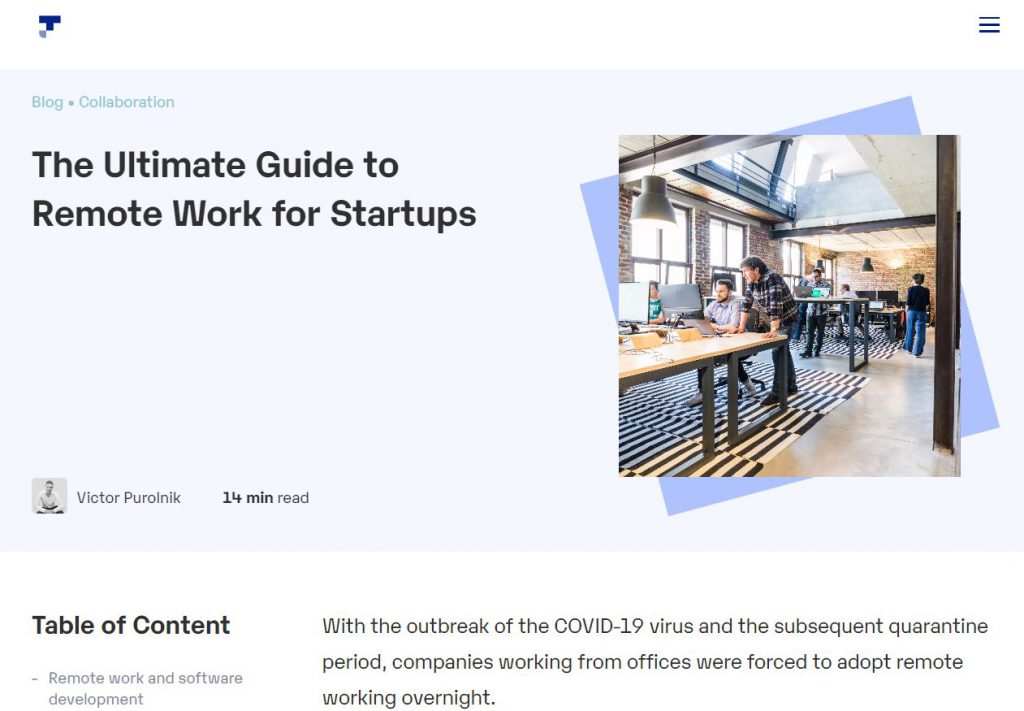 Source: Trustshoring.com
Source: Trustshoring.com
Encourage Brand Loyalty
When it comes to nurturing leads and driving conversions, brand loyalty is the MVP of the game. By providing value to your audience and helping them resolve their issues through your product or service, you’re fortifying a foundation for long-lasting customer relationships.
So, how do you transform your company blog into a loyalty-generating powerhouse? Start by implementing the following:
- Craft insightful tutorials. Publish step-by-step guides, how-tos, and tutorials demonstrating the best ways to use your product or service. By making it easy for customers to unlock the full potential of your offering, you’re empowering them to see tangible results and positive outcomes.
- Share valuable knowledge and insights. Offer in-depth articles, whitepapers, or webinars that delve into industry trends, best practices, or advanced techniques related to your product. By sharing expert knowledge, you’re positioning your brand as a trusted partner in your customers’ journey to success.
- Create engaging videos. Produce video content that showcases your product or service in action, offers tips and tricks, or highlights customer success stories. Videos are visually appealing and make complex concepts more accessible, making it easier for customers to learn and apply the information.
- Showcase success stories. People love a success story, and there’s no better way to prove your product’s worth than by sharing real-life examples. Publish case studies, testimonials, and interviews with satisfied customers to demonstrate how your product has positively impacted their lives.
Example
Take Monday, for example. This project management tool has mastered encouraging brand loyalty through blogging. They offer a mix of in-depth tutorials, videos, and best practices that help users maximize the platform’s potential. Their blog covers everything from getting started with the platform to advanced tips on automating workflows and boosting team collaboration.
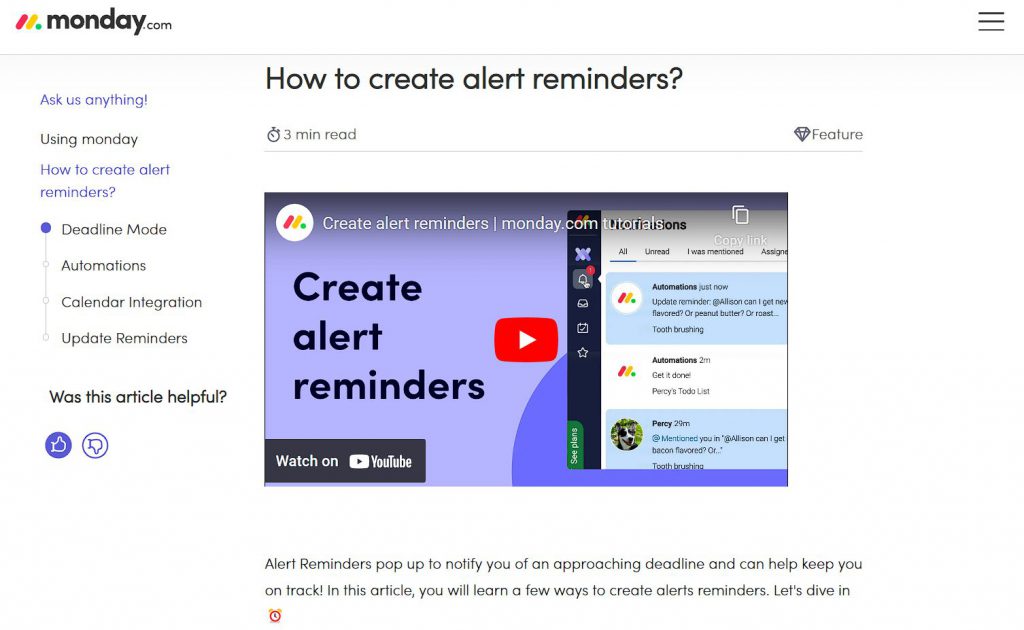 Source: Monday.com
Source: Monday.com
Illustrate Relatable Success
When creating content that inspires and motivates your audience, sharing relatable success stories is a game-changer. By showcasing the achievements of real people with whom your readers can identify, you’ll make a powerful connection and help them visualize the benefits of your product or service.
Here’s how to leverage relatable success to boost sales and conversions:
- Feature customer stories. Share in-depth interviews with customers who have experienced tangible success using your product or service. Focus on relatable individuals or businesses, highlighting their challenges and how your product helped them overcome those hurdles.
- Create customer-centric content. Develop blog posts that offer insights into your customers’ journeys, focusing on the specific pain points your product or service addresses. This will allow readers to see themselves in these stories and understand how your offering can help them reach their goals.
- Leverage social proof. Social proof is a powerful psychological tool that can drive conversions. Share testimonials, user reviews, and endorsements from satisfied customers to build credibility and trust in your brand.
- Celebrate user milestones. Show appreciation for your customers by celebrating their achievements and milestones. Share success stories and highlight the accomplishments of your users to create a sense of community and foster brand loyalty.
Example
SellerPlex does this expertly. This e-commerce sales and management platform publishes many case studies on its blog, focusing on the unique challenges and victories experienced by all types of businesses. This way, they effectively demonstrate how their services are the right answer for any e-commerce company’s management requirements.
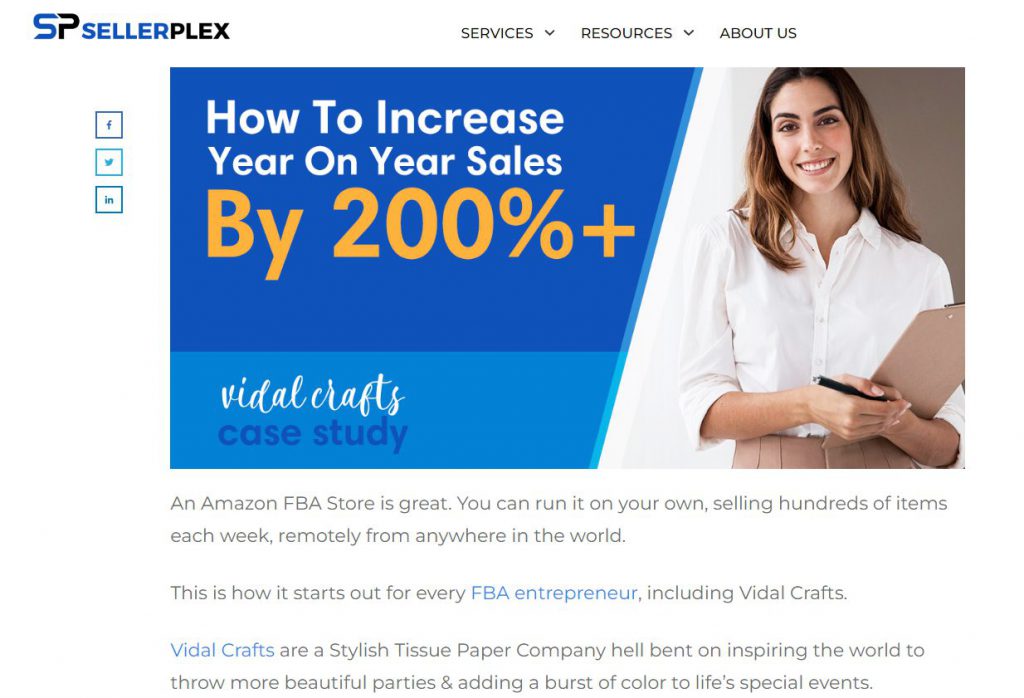 Source: SellerPlex.com
Source: SellerPlex.com
Another excellent example of a company that excels at illustrating relatable success is Zendesk, a customer service and sales CRM software. Their blog showcases diverse customer stories that resonate with their target audience. They often interview business owners and CEOs in a video format and publish them on the blog.
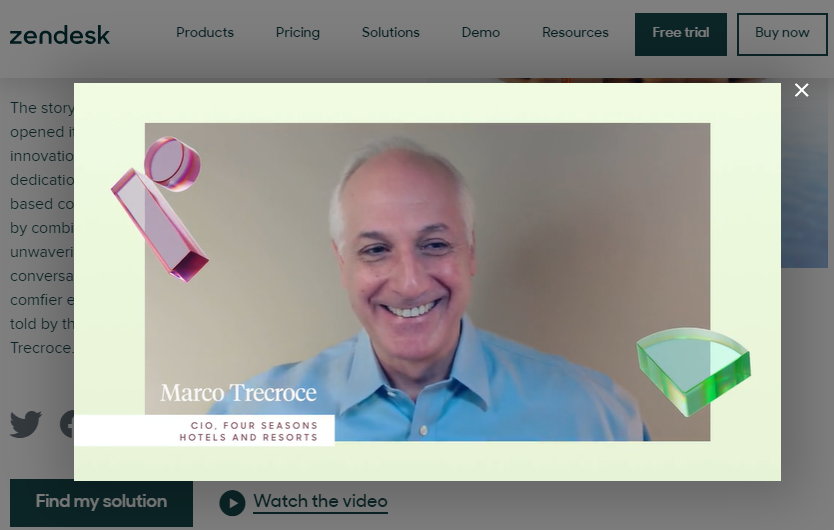 Source: Zendesk.com
Source: Zendesk.com
Publish Proprietary Knowledge
Becoming an industry thought leader is a surefire way to drive traffic, generate leads, and ultimately, boost sales and conversions. One of the most effective strategies for achieving thought leadership status is conducting unique research and publishing your findings.
This will make your blog an invaluable resource for your audience and encourage others to reference your work, building your brand’s credibility and reach.
Let’s explore some tactics in this regard:
- Conduct original research. Identify knowledge gaps in your industry and conduct research to fill those voids. This could involve running surveys, analyzing data, or interviewing industry experts. You’ll position your brand as a pioneer and thought leader by offering fresh insights.
- Create comprehensive reports. Compile your research findings into in-depth reports that provide valuable insights to your audience. Make sure to present your data in an easily digestible format, using visuals such as charts, graphs, and infographics to enhance your content.
- Share key findings on social media. Amplify the impact of your proprietary knowledge by sharing key findings on social media platforms. This will drive traffic to your blog and encourage influencers and industry peers to share your content, further boosting your reach and credibility.
- Regularly update your research. Stay ahead by regularly updating your research, ensuring your audience is always equipped with the latest insights and trends.
Example
A shining example of a company that has mastered the art of publishing proprietary knowledge is Wyzowl, an animated video production company. Their annual video marketing report has become a go-to resource for marketers and industry professionals. They’ve earned priceless respect from customers and their industry peers by conducting comprehensive surveys and presenting their findings in an engaging, easy-to-understand format.
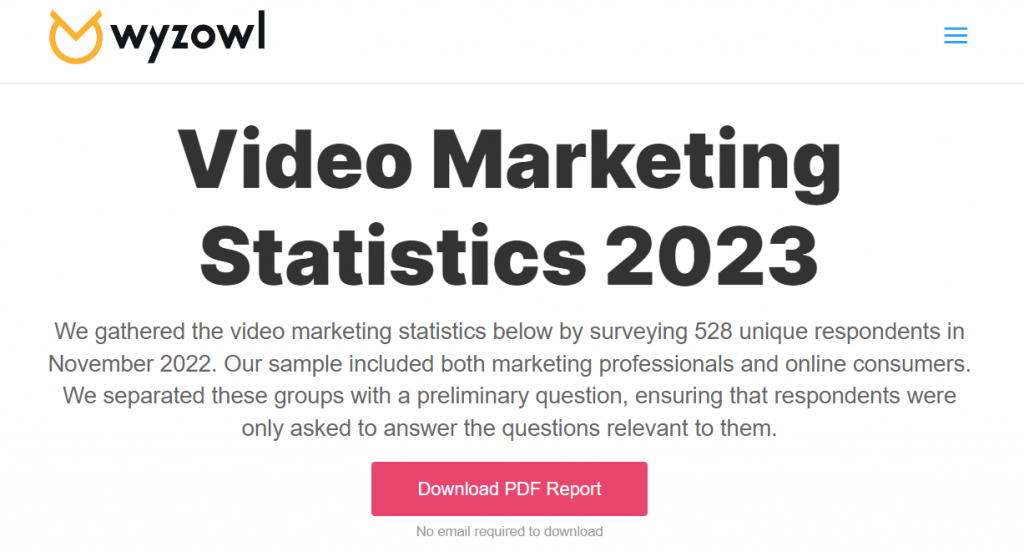 Source: Wyzowl.com
Source: Wyzowl.com
Final Thoughts
And there you have it – the secret sauce to transforming your company blog into a sales and conversion magnet.
Remember, in a world full of high-tech startups, it’s crucial to stay on top of the game and ensure that your blog remains a haven for your target audience. Keep your content fresh, engaging, and relevant, and watch as your blog becomes the MVP of your growth hacking strategy.
So, gear up, grab your keyboards, and crush those KPIs. Happy blogging, and may the growth be ever in your favor!
Featured mage by dashu83.

